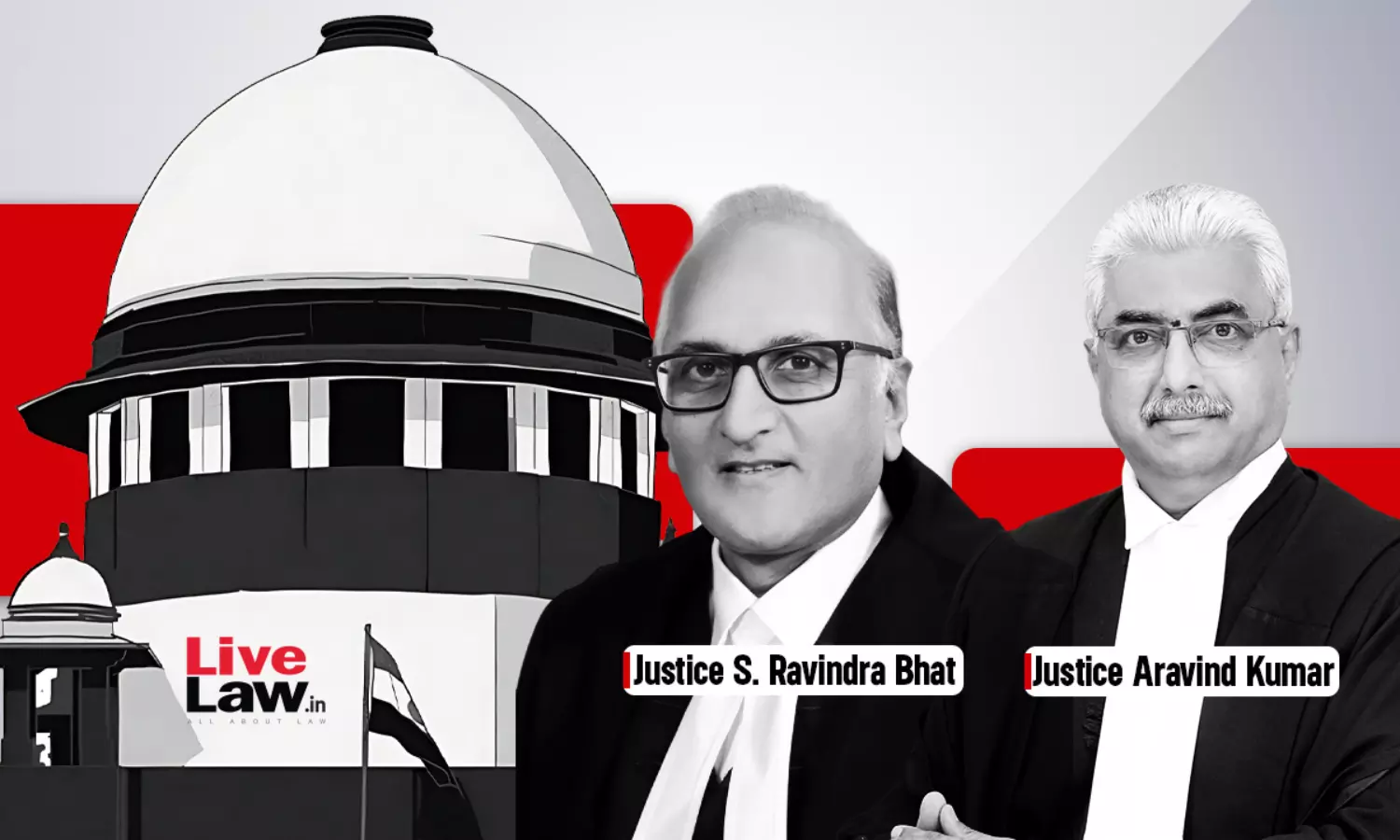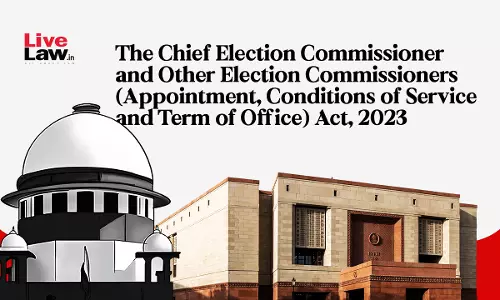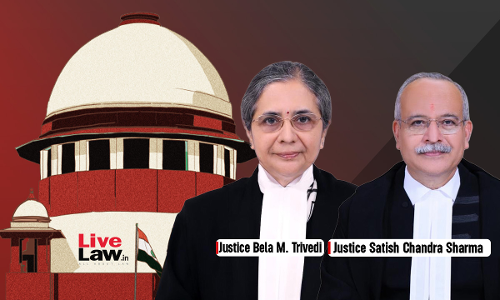Sterling Witness Should Be Of High Quality Whose Version Is Unassailable: Supreme Court

The Supreme Court recently held that the evidence of an eye-witness should be of very sterling quality and caliber and it should not only instill confidence in the court to accept the same but it should also be a version of such nature that can be accepted at its face value.The Court relied on Rai Sandeep @ Deepu alias Deepu V. State (NCT of Delhi) (2012) 8 SCC 21 which held: “the...
The Supreme Court recently held that the evidence of an eye-witness should be of very sterling quality and caliber and it should not only instill confidence in the court to accept the same but it should also be a version of such nature that can be accepted at its face value.
The Court relied on Rai Sandeep @ Deepu alias Deepu V. State (NCT of Delhi) (2012) 8 SCC 21 which held: “the “sterling witness” should be of very high quality and caliber whose version should, therefore, be unassailable. The court considering the version of such witness should be in a position to accept it for its face value without any hesitation. What would be relevant is the truthfulness of the statement made by such a witness. It should be natural and consistent with the case of the prosecution of the accused. The witness should be in a position to withstand the cross-examination of any length and however strenuous it may be. It can even be stated that it should be akin to the test applied in the case of circumstantial evidence where there should not be any missing link in the chain of circumstances to hold the accused guilty of the offense alleged against him. Only if the version of such a witness qualifies the above test as well as all other such similar tests to be applied, can it be held that such a witness can be called a “sterling witness” whose version can be accepted by the court without any corroboration and based on which the guilty can be punished.”
The Court clarified that these criteria for credible eyewitness testimony should have a correlation with all other supporting materials such as recoveries made, weapons used, the manner in which the offense was committed, scientific evidence, and expert opinions. In essence, a sterling witness's account should be consistent with all other evidence in the case.
The Supreme Court bench comprising Justices S Ravindra Bhat and Justice Aravind Kumar was hearing an appeal against the Punjab and Haryana HC judgment which affirmed the conviction of appellants under section 302 read with section 149 of IPC.
The case dates back to April 22, 2016, when Assistant Sub-Inspector (ASI) Ram Kishan, on patrolling duty at 75 feet road, received a telephonic tip that a gunshot had been fired at a young boy in the village of Maheshwari. Upon arrival at the scene, a statement was recorded from Mohit, who stated that his cousins Ajay and Suraj had been chased by three individuals on a bullet motorcycle, with Ravi as the driver and Shoaib Khan as the pillion rider. 2 more motorcycles with 2 riders carrying batons were following the bullet.
According to Mohit's statement, the unknown person on the bullet motorcycle fired at Ajay with a country-made revolver, striking him in the head. Ajay was rushed to the hospital, but he succumbed to his injuries the next day. Mohit further claimed that Ravi, one of the accused, had threatened to kill Ajay and Suraj during a dispute on the day of 'Dulhandi,' leading to the shooting incident.
Based on this statement, an FIR was registered, and the accused were apprehended. The charge was framed against six accused persons. In a judgment dated October 6, 2017, the Sessions Judge convicted the accused persons under Sections 148, 149, 302 of IPC and Section 25 of the Arms Act. This conviction was later affirmed by the High Court in 2020.
Aggrieved by this, the appellants approached the Supreme Court.
The Court's scrutiny revealed that the convictions of all the accused were primarily based on the testimony of Mohit (PW-9), the recovery of motorcycles, and the motive attributed to the crime by PW-9 in his statement recorded on the day of the incident.
Upon close scrutiny of the evidence and eyewitness testimony, the Supreme Court identified several inconsistencies and gaps in the prosecution's case. The Court noted that the prosecution had failed to record the statement of Suraj, who was present with the deceased Ajay during the incident and had taken refuge in Dharmender's house. He was also not cited as a witness on behalf of the prosecution, which the Court deemed a significant gap in the prosecution's case. The Court noted that PW-9 did not attempt to contact him to ascertain the names of the accused persons. The Court considered this another significant gap in the prosecution's case.
Furthermore, the testimony of the key eyewitness, Mohit (PW-9), showcased inconsistencies.
The Court noted that he had not named the appellants in the First Information Report (FIR) and had failed to identify Naresh @ Nehru as the driver of the Splendor motorcycle. While he identified Irshad and Sonu Kumar in court, he had not named them in his initial statement made before the police.
Moreover, there were discrepancies in the timing of PW-9's statement, the police's arrival at the crime scene, and the statement handover created further doubts about the case's integrity.
The Court also expressed strong reservations about the credibility of the CCTV footage used to convict the appellants. The Court noted the video (CD) had not been forwarded by the police to the Forensic Science Laboratory. Additionally, neither PW-8's laptop nor mobile phone, which he claimed to have used to transfer the video, were produced by the prosecution or seized by the police during the investigation.
Further, the court observed that the certificate as required under section 65-B for electronic evidence had been prepared by a police official, Mr. Aman, who had not been examined.
It is worth noting that PW8 himself also conceded that the faces of the assailants were not visible or identifiable in the video, and the registration numbers of the motorcycles involved were also not visible.
The Court concluded, “This is the third stage of the deficient investigation and blame has to be necessarily laid at their door and the benefit of the doubt has to be extended to the accused persons.”
In light of the above, the Supreme Court ruled that the prosecution had failed to prove the appellants' guilt beyond a reasonable doubt. The Court set aside and consequently acquitted the appellants.
Also from the judgment - S.149 IPC - Prosecution Must Prove Accused Was Aware Of Offences Likely To Be Committed To Achieve Common Object: Supreme Court
Case title: Naresh @ Nehru v. State of Haryana
Citation: 2023 LiveLaw (SC) 880
For Appellant: Adv. Siddharth Mittal and Adv. Soumik Ghosal
For Respondent: Additional Advocate General Manisha Aggarwal Narain
Click Here To Read/Download Judgment




![Supreme Court Weekly Digest March 2025 [March 10 - 16, 2025] Supreme Court Weekly Digest March 2025 [March 10 - 16, 2025]](https://www.livelaw.in/h-upload/2023/02/13/500x300_458804-supreme-court-weekly-digest.webp)